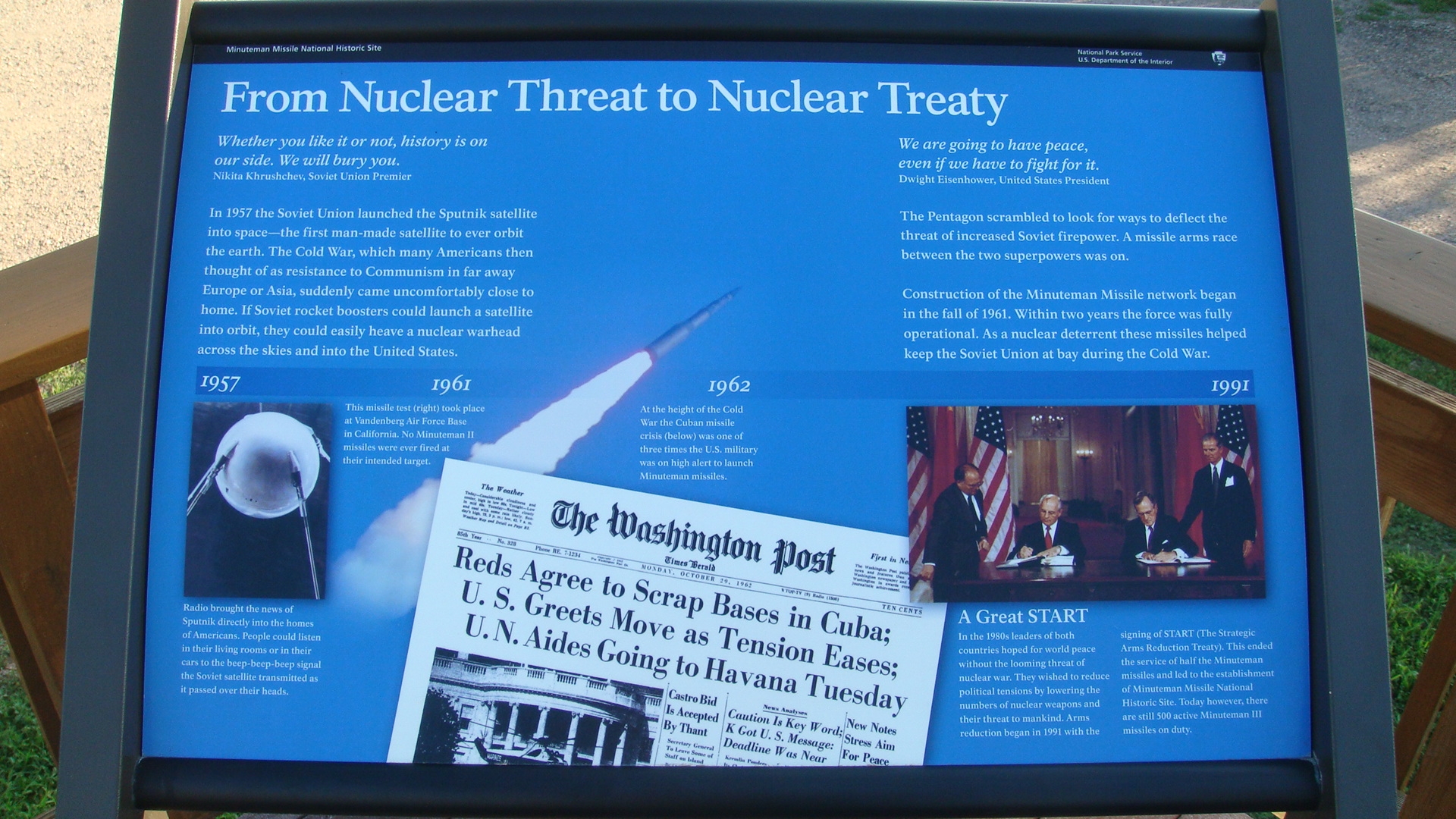Photograph as originally submitted to
this page in the Historical Marker Database
www.HMdb.org.
Click on photo to resize in browser. Scroll down to see metadata.
Photographer: William J. Toman
Taken: August 6, 2010
Caption:
Related Marker | Additional Description:
From Nuclear Threat to Nuclear TreatyWhether you like it or not, history is on our side. We will bury you.Nikita Khrushchev, Soviet Union Premier
We are going to have peace, even if we have to fight for it.Dwight Eisenhower, United States President
In 1957 the Soviet Union launched the Sputnik satellite into space--the first man-made satellite to ever orbit the earth. The Cold War, which many Americans then thought of as resistance to Communism in far away Europe or Asia, suddenly came uncomfortably close to home. If Soviet rocket boosters could launch a satellite into orbit, they could easily heave a nuclear warhead across the skies and into the United States.
The Pentagon scrambled to look for ways to deflect the threat of increased Soviet firepower. A missile arms race between the two superpowers was on.
Construction of the Minuteman Missile network began in the fall of 1961. Within two years the force was fully operational. As a nuclear deterrent these missiles helped keep the Soviet Union at bay during the Cold War.
1957Radio brought the news of Sputnik directly into the homes of Americans. People could listen in their living rooms or in their cars to the beep-beep-beep signal the Soviet satellite transmitted as it passed over their heads.
1961The missile test (right) took place at Vandenberg Air Force Base in California. No Minuteman II missiles were ever fired at their intended target.
1962At the height of the Cold War the Cuban missile crisis (below) was one of three times the U.S. military was on high alert to launch Minuteman missiles.
Submitted: August 8, 2010, by William J. Toman of Green Lake, Wisconsin.
Database Locator Identification Number: p121546
File Size: 0.803 Megabytes
To see the metadata that may be embedded in this photo, sign in and then return to this page.
